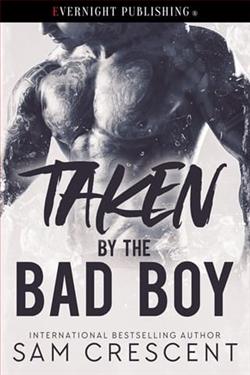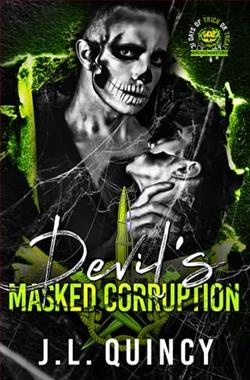Page 63 of When We Were Enemies
“I already told you. No one’s going to touch your grandpa’s grave. I promise.” She shrugs. “I’m sorry, honey. I thought I told Patty to text you about it last week. I was slammed. Press junket forFinding Mrs.Franklinwas intense. You know how Toro and Brit Parsons hate one another. After they loved one another, I guess that is.” What follows is a detailed retelling of the conflict between the lead and director on the set of the historical where my mom played the elderly version of Ben Franklin’s wife. Mom acts like she’s above such feuds because of her age and pedigree, but she actually revels in it all.
Her phone dings loudly, and she stops to check the notification. The font size on her screen is three times mine, so I can read it from where I’m sitting—a reminder to take her medication. She scrambles around in her bag, mumbling about how she’d been searched at security but was sure it was an attempt to snag a trophy or two for her rabid internet fans.
“It was only a little thing of mace on my key chain. Can you believe it? They made me take it off and throw it away even after I explained how important it is for a woman to defend herself these days. I swear I hate flying commercial. It’s always a fiasco.”
“So, not a rabid fan, then?” I ask with heavy sarcasm, still frustrated that I’ll have to wait—again—for answers to my questions. We need to have this conversation about our family. Especially since anyone who is curious enough to turn on their TV will soon know everything. Is it wrong that I, as Vivian Snow and Tom Highward’s granddaughter, would like to know first?
“What makes you say that? You don’t think I have rabid fans, do you?” She takes half of the contents of her purse out, places the items on the cushion beside her, and then keeps digging, looking for her pillbox. “’Cause I do, Elise. I do. One man last month sent me a doll dressed like Suzie from that little stint I did onThe Cubical, and it had real hair. Realhumanhair.” She drags another load out of her handbag and shouts, “Ah-ha!” as she pulls out a complicated plastic container that looks way too big to be misplaced.
She gets up to search my minibar for “something to wash it down with” and asks me to reload the contents of her purse as she makes her way to the bathroom.
I assumed it would make a difference to talk with her in person without assistants or boyfriends around. But I always forget it’s not any particular person keeping my mom from understanding me—it’s just who she is. She’s never understood me, and as my therapist said, the one I went to briefly after Dean died, I need to get used to the idea that she never will.
“Mourn it,” my therapist used to say. But I already had so much to mourn at the time that I wasn’t ready to mourn a mother who was still alive. So I didn’t. And I’m not sure I’m ready even now. Though at this moment, as I’m refilling her purse with stacks of paper and empty notebooks and a confusing number of pens, I’m wondering why it seems so impossible. Other daughters have mothers who understand them. Nonna loved my mom, cared for her, sacrificed for her. So why didn’t my mom learn how to be that kind of parent to her own children?
As I toss the last two items into her bag, I see an ancient-looking scrapbook and a flat rectangular box that looks like a COVID home test. I stop. The scrapbook looks familiar. I remember it sitting next to Nonna’s bedside. When I stayed with her, we’d look through the pages at the postcard-sized drawings and watercolors of various exotic locales, some she’d visited and some she’d still dreamed of seeing with her own eyes.
I haven’t seen this book in decades. I’m tempted to take a look inside, but then the other item pulls my attention. I place the scrapbook in my mom’s bag and inspect the small box, checking to make sure she’s still in the bathroom. It’s not a COVID test after all. I hold up the box and read the packaging again and again, confused.
Why does my mom have a mail-in DNA paternity test in her bag? And why is the box empty?
I shove the test under the scrapbook and toss the bag with everything in it into the corner of the couch as my mom leaves the bathroom, holding the now-empty pill tray.
“Those antibiotic pills are so large they make me gag every time. Patty broke them up into smaller pieces, but they still stick to my throat, I swear. Don’t get old, darling. It’s not as glamorous as we make it look.” She puts the tray back in her purse and then shoves the pictures into the envelope, drapes her coat over her arm, and puts her sunglasses on, even though we’re inside.
“Mom, those pictures ...”
“Oh, sorry, I thought they were for me.”
“I was hoping to keep them until we had our talk.”
“I totally understand.” She reaches into her bag, takes out the envelope, and shakes it in front of me. “I’ll send Mac’s assistant down later, though. Get these scanned so we both have a copy. Sound good?”
I start to say no but find the word hard to say. Nothing works with my mom—nothing. She puts the envelope on the coffee table.
“Well, think on it. I’m heading up to my room. If you need me, I’m in suite 435,” she says. That’s Mac’s room. I know it from the one-on-one interviews he films in the sitting area there. I shouldn’t be surprised—of course she’ll stay with him. But as she walks out of the room with as much flair as her entrance, I start to devise a crisis-management plan because it looks like I’m the only one watching out for this family, and I don’t see that changing anytime soon.
CHAPTER 20
Vivian
Monday, June 7, 1943
Chapel in the Meadow
The lane is dimly lit by light streaming through the branches and thick leafy cover. If I didn’t know we were still on camp property, I’d think we’d entered a fairy world. But the deep rumble of the military vehicle and the death clutch I have on the bar on the side of the jeep keeps me from straying too far from reality.
West, through Nineveh.Talbot’s poetic confession came back to me the moment we headed out this morning for the chapel site. These woods border the small town of Nineveh and must be the cover used by soldiers brave enough, or foolish enough, to go AWOL for a night. It’s also rumored that POWs use the forest as well. It’s no wonder they make it in and out undetected—the land is rough and raw, untouched for the most part by humans. Besides the small POW cemetery, the only other vestiges of modern man are the tire tracks in the tall grass and the group gathered in the clearing ahead.
Finally, I’ll stand on the actual spot where the chapel will be built. The river runs on one side of the path, with pussy willows hugging itsedges like crinolines peeking from the bottom of a skirt. White-and-gray waterbirds dot the reeds, and a few ducks lounge in the water, unfazed by the influx of humanity. On the other side of the path, a broad meadow stretches along the barbed wire of the western side of the POW compound.
The foundation is scheduled to be fully dug and poured in two weeks. At that point, the exterior fence will be completed to make the structure officially part of the camp. If all goes as planned, the full project should reach completion before the weather turns cold. It’ll be a small building, wholly made of cement and surplus building materials from the camp, but the planned artwork and masonry are breathtaking. Selfishly, I’m eager to get past the labor portion of the project so I can watch the artists as they work on the murals that’ll line the walls of the chapel.
Private Craig angles the jeep up the slight slope to the cluster of prisoners and guards. The men use what look like old-fashioned scythes to clear the grass. A figure dressed in religious vestments stands in a northern corner of the clearing, sprinkling what I assume is holy water with a brass aspergillum.
Beside him, Trombello stands with his head bowed and hands clasped, likely the only one of the men to know by memory the Latin prayers of dedication. I don’t recognize the other man, except I can tell from his dress that he’s an archbishop. He’s wearing a robe with red lining and a loose black cassock, red sash at his waist, and red zucchetto on the crown of his head.
Perhaps that’s the reasoning behind the vestments, like the uniforms worn by the army men and by the POWs, the ceremonial clothing of the clergy lets others know to whom their loyalties belong.















